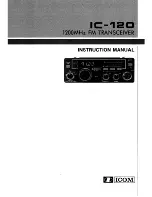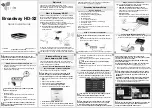
• The icon below will be shown if the device is a
stationary radiodevice that is part of a Fluidity network:
• The dynamic Wi-Fi reception-style icon below will be
shown if the radio device is a mobile device that is part
of a Fluidity network. This icon shows whether the
radio's current RSSI is weak, acceptable or strong.
• The icon below will be shown if the device is an Ultra-
reliable Wireless Backhaul Gateway device.
• The device label, corresponding to the device’s name
configuration parameter (
Alexa
in the image above).
• If the device is a mobile radio transceiver, the device’s
Primary
/Subordinate setting will be shown. A
Primary
device is marked M, and a Subordinate device is
marked S.
• The device’s IP address.
• If the device is a stationary mesh end, it will be marked
ME
. If
it is a stationary mesh point, it will be marked
MP
. If it is a
mobile radio, the RSSI (in dBm) between the radio and the
stationary radio to which it is connected will be shown.
• If the device does not currently have a configured IP address
or device label, the device’s Cisco Mesh ID number will be
shown.
• If the network is a Fluidity network, mobile Cisco radio
transceivers that are part of the network are shown as
tool tips with colored borders. The tool tip representing
amobile Cisco radio is always shown below the tool tip of
Device configuration using the configurator interface
© 2021 Cisco and/or its affiliates. All rights reserved.
Page 77 of 175
















































